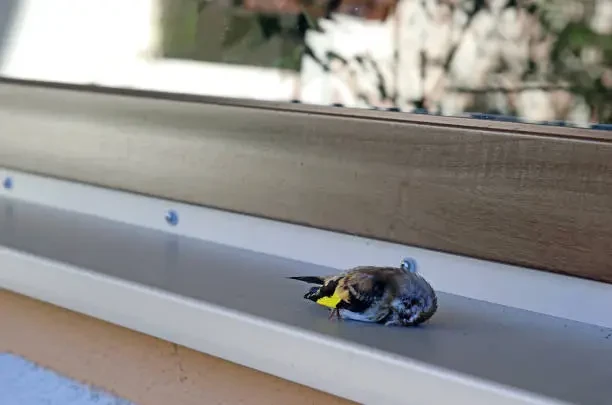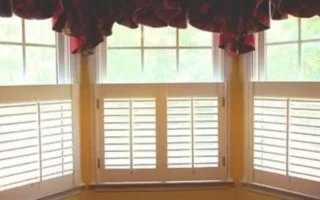The Impact of Bird-Window Collisions
Bird-window collisions have become widespread with the increasing number of buildings and glass surfaces in urban areas. The reflective nature of windows often tricks birds into thinking they are flying through open space, leading to sudden impact. These collisions can result in injuries ranging from mild concussions to more severe trauma, affecting their ability to fly and survive.
The impact of these accidents is physical and can lead to stress and disorientation for the birds involved. Many injured birds may struggle to recover on their own without intervention. We must understand the gravity of these collisions and take action when needed to help our avian friends in distress.
Steps to Take When a Bird Hits a Window

When a bird collides with a window, it can be a startling and distressing experience for both the bird and the human witnesses. If you come across a bird that has hit your window and is still alive, there are essential steps you can take to help.
First, approach the bird slowly and cautiously to assess its condition. Remember that birds may be stunned or disoriented after such an impact. Next, carefully pick up the bird using gentle hands or gloves to avoid causing further harm. Please place it in a well-ventilated cardboard box with paper towels or cloth.
Keep the box quiet, a dark place away from pets and loud noises. Check on the bird periodically while waiting for professional help to arrive.
Providing care for an injured wild animal requires specific knowledge and training. Contact local wildlife rehabilitation centers or animal control services to assist in effectively assessing and treating the bird’s injuries.
Providing Immediate Care for the Injured Bird
As you witness a bird colliding with your window, your immediate response can significantly affect its chances of survival. Approach the injured bird calmly and cautiously to avoid causing further stress or harm.
Carefully pick up the bird using a towel or cloth to prevent any direct contact that could exacerbate its injuries. Please place it in a well-ventilated box lined with paper towels, ensuring enough space for the bird to move but not too much room for excessive movement.
Keep the box in a quiet and warm area away from pets and children while you assess its condition. Refrain from offering food or water at this stage, as it may not be safe for the bird in its weakened state.
Contact local wildlife rehabilitators, animal control services, or veterinary clinics specializing in avian care for assistance. They have the expertise and resources to treat and rehabilitate injured birds properly.
Finding Professional Help for the Injured Bird

If you find yourself in a situation where a bird has hit your window and is still alive but visibly injured, it’s crucial to seek professional help promptly. While providing immediate care is essential, some injuries may require specialized treatment that only trained professionals can provide.
One option is to contact local wildlife rehabilitation centers or animal rescue organizations. These experts have the knowledge and resources to accurately assess the bird’s condition and administer proper medical care.
When reaching out for assistance, be prepared to provide details about the bird’s size, color, behavior, and any visible injuries. This information will help professionals determine the best action for the bird’s well-being.
Seeking professional help increases the chances of survival for the injured bird and ensures it receives appropriate long-term care. Wildlife experts are equipped to handle various situations with compassion and expertise.
Preventing Future Bird-Window Collisions
Imagine a world where birds soar freely without the fear of crashing into windows. It’s a peaceful coexistence we can strive for by taking simple preventive measures.
Window decals or films that break up reflections make the glass more visible to birds. These visual cues can help prevent collisions by alerting our feathered friends to the presence of a barrier.
Another effective method is installing external screens, shutters, or netting around windows to create a physical barrier between birds and the glass surface. This physical obstruction acts as an additional layer of protection against potential collisions.
Strategically placing feeders and plants away from windows to reduce the chances of attracting birds near hazardous areas. Creating safe zones for our avian companions can significantly decrease the risk of future accidents.
Understanding and Protecting Our Feathered Friends
Bringing life and beauty to our surroundings, birds are fascinating creatures. Understanding their behavior can help us protect them better. By learning about the types of birds in our area, we can create bird-friendly environments that reduce the risk of window collisions.
Protecting our feathered friends goes beyond just preventing accidents. Simple actions like keeping cats indoors, using bird-safe glass, and placing decals on windows can make a big difference. Providing food, water, and shelter through bird feeders or nest boxes can support their well-being.
Being mindful of human activities’ impact on birds is crucial for survival. Avoiding pesticide use and preserving natural habitats are essential to protecting these vulnerable creatures. Together, we can ensure a safer environment for our beloved avian companions to thrive harmoniously with nature.




